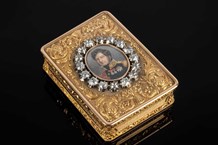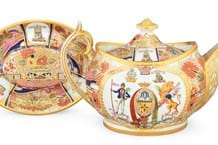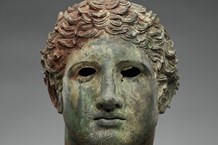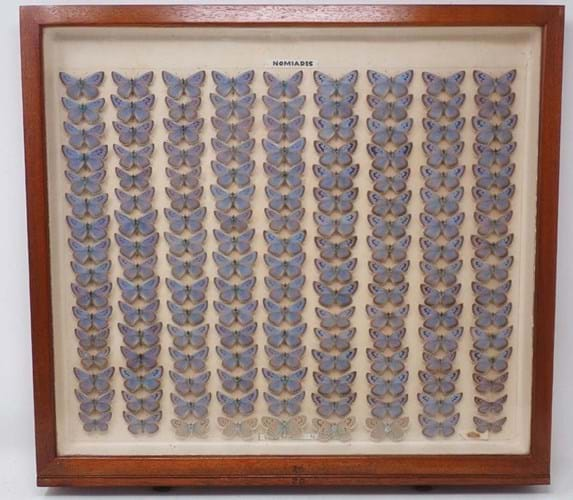
The collection, housed in walnut cabinets by J Thorne, was assembled by brothers Bernard and Alexander Adams, two amateur lepidopterists who are known for their contribution to a pioneering work on the genitalia of geometrid moths (don’t say you haven’t read it?).
The cabinets came for sale by descent from a family member in Oxfordshire - something of a dream consignment for Minster Auctions natural history specialist Daniel Webb, himself a butterfly enthusiast.
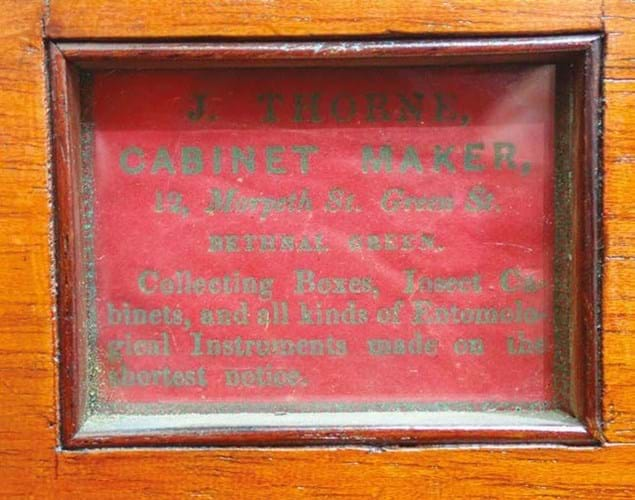
Label on one of two AJ Thorne walnut collecting cabinets housing all 58 species of British butterflies – this one shown made £21,000 at Minster Auctions.
Thorne, based in the Whitechapel-Stratford furniture-making district of east London, specialised in making the bespoke collecting and display cabinets that were a familiar sight in the homes of enquiring Victorians.
Empty, these two were worth perhaps £2000-3000. However, the true value of the collection lay in the quantity and quality of the specimens.
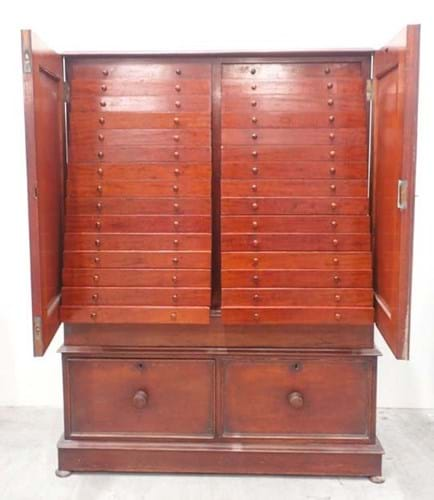
One of two AJ Thorne walnut collecting cabinets housing all 58 species of British butterflies – this one shown made £21,000 at Minster Auctions.
Large Blue bonus
The larger of the two cabinets at 4ft 6in high x 3ft 5in wide (1.37 x 1.04m) enclosed two banks of 15 sealed glass-topped drawers housing multiple examples (featuring genetic variations and deformities) of 58 species of British butterflies including extinct and since re-introduced species such as the Black-veined White, Large Blue, Large Tortoiseshell and Large Copper.
“The array of around 140 Large Blues, a species with a remarkable life cycle that went mostly extinct in 1979 but has since been reintroduced, was particularly spectacular and created a lot of interest,” said Webb.
A handwritten exercise book listing all the specimens and when they were acquired was included with the lot that sold at £21,000 (estimate £5000-8000) to a “general collector who loved the idea of owning examples of all the British butterflies”.
A second and smaller Thorne cabinet measuring 3ft 11in x 2ft 5in (1.14m x 74cm) was guided at £3000-5000 but made £20,000.
It sold to a different buyer - a lepidopterist in London. Its 20 glass-topped drawers included two drawers completing the butterfly collection (six more of the UK’s nine blue butterfly species), a third devoted to larvae and pupae with the rest devoted to British macro-moths.











